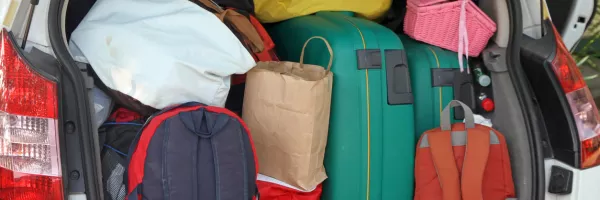
4 Steps to a Successful Summer Road Trip
If you’re planning a summer driving vacation this year, you’re in good company! According to a survey conducted by TripAdvisor, a whopping 74% of summer travelers will be making their journeys by car.
But summer road trips don’t always go smoothly - AAA expects to come to the rescue of at least 8 million summer travelers who will have their vacation plans derailed by a breakdown. Don’t be one of them! Here are some tips to make sure both you and your car are ready for anything you might encounter on the road.
Plan Your Journey
Mapping out your road trip is about more than just the sightseeing! Breaking up your trip into manageable portions is essential to your ability to drive safely, and planning your stops in advance can help you resist the temptation to keep going when you’re tired.
- Don’t underestimate the risks of drowsy driving! According to the National Sleep Foundation, sleeping only 6 to 7 hours per night doubles your crash risk compared to sleeping 8 or more hours, and sleeping less than 5 hours per night multiplies your crash risk by 4 to 5 times.
- Drinking extra coffee or taking a nap might make you feel more alert temporarily, but if you’re fatigued, the only cure is a good night’s sleep.
- The National Sleep Foundation also recommends taking breaks during your day’s drive, about every 100 miles or 2 hours to keep yourself feeling fresh.
- Roadtrippers is a trip planning website and smartphone app that allows you to view a wide variety of attractions in the areas you’ll be driving through, helping you plan your stops and overnight stays.
Stay on Top of Your Maintenance Schedule
Keeping your car well-maintained is essential to avoiding unexpected breakdowns, especially under the stress of hot summer weather.
- If your vehicle has been serviced regularly and recently, you’ll be in good shape. If your next service is coming up, or you’re not sure when the vehicle was last serviced, take it to your mechanic for a check-up before you head out. (NHTSA)
- Even if you’re up to date on your service schedule, it’s a good idea to periodically check your vehicle’s oil, and get an oil change if your car is due for one. (NHTSA)
- Also be sure to check your tire pressure, and the depth and condition of your tire treads. If you’ll need new tires soon, get them before you go (Car Talk)(Consumer Reports)
- Hot weather puts additional stress on your car, and may cause your car to overheat on a long drive or in heavy traffic. To avoid this, make sure your coolant level is adequate before you start your journey, and pay attention to your temperature indicator for signs of trouble. (Car Talk)
- Making sure your air conditioning is working properly isn’t just a matter of comfort. The belt that powers the air conditioning often also powers the water pump that moves coolant through the engine system and prevents overheating. (Car Talk)
- Car Talk provides a detailed list of things you’ll need to check over to get your car ready for summer, and The Weather Channel provides a visual guide to seasonal auto maintenance.
Prepare for Severe Weather
While we’re hoping for sunny summer skies, the weather doesn’t always cooperate! Make sure you know what you might encounter, especially if you’re driving in an unfamiliar region.
- Be aware of possible extreme weather events and proper safety procedures. Wunderground offers a Severe Weather Alert Map to help you prepare, and a Road Trip Planner showing the forecast for your route at the estimated time you’ll be passing through each area.
- Rain can loosen oil and grime on roads that haven’t seen rain in a while, creating a dangerously slick surface. Remember to reduce your speed in rainy situations to avoid hydroplaning, and make sure your wiper blades are in good shape so you’ll have good visibility in a downpour (The Weather Channel)(NHTSA)
- Sudden storms, even those occurring miles away, may also cause flash floods. Do not drive through flooded areas - your car may stall in the water. Instead, seek another route, or get to higher ground and wait for the flooding to subside. If your car does stall, abandon it immediately and seek higher ground. (The Weather Channel)
Pack an Emergency Kit
Even with the best car maintenance, a breakdown is still a possibility. Prepare for the unexpected by packing emergency supplies. At the minimum, you should consider bringing:
- A fully charged cell phone, plus a car charger
- First aid kit
- Flashlight
- Flares or reflective hazard triangles to warn other motorists of your stopped car
- Jumper cables
- Nonperishable food, drinking water, and essential medicines
- Check out Consumer Reports’ detailed checklist for more useful items to include!
What are your tried and true road trip tips? Share them in the comments below!